All photos in the gallery courtesy of the CN Tower Archives.
Article originally published December 21, 2012 by The Grid online (thegridto.com).
In this edition of Then & Now, we travel back three decades—and up 1,100 feet—to revisit the CN Tower’s beloved in-house discotheque.
BY: DENISE BENSON
Club: Sparkles, 301 Front St. W.
Years in operation: 1979-1991
History: When the construction of Toronto’s iconic CN Tower began in February of 1973, few would have imagined it filled with strobe lights and spandex. The Canadian National Railroad’s Tower would be an impressive engineering feat, serving as both tourist attraction and a communications boon for radio and television broadcasters seeking a taller building on which to place transmitters for stronger signals.
The CN Tower opened to the public in June 26, 1976. At that time, the surrounding area was far from dense or residential. The north side of Front Street was largely parking lots, the Metro Toronto Convention Centre had not been built, nor had the SkyDome (now Rogers Centre). In fact, one accessed the Tower by walking through a pedestrian bridge—starting from where Rogers Centre is now—that crossed over sets of train tracks. There was a reflecting pool at the Tower’s base, and fields nearby.
In 1979, to coincide with the Tower’s third anniversary, one-third of the indoor observation level was developed into a discothèque. The goal was to attract diverse evening crowds to this floor, which lay below the Tower’s rotating 360 Restaurant and above the outdoor observation deck.
The nightclub was given its identity as Sparkles by Thornhill resident Judy Godsman, winner of the Toronto Star’s “Name the Disco” contest, in August 1979. There were more than 15,000 entries, with other name suggestions including Cloud Nine, Glitters, and Infinity.
Godsman and the 25 contest runners-up were invited to Sparkles’ Oct. 4 opening party. A preview article that appeared in the Star that day revealed that 500 guests would be entertained in the new $750,000 dance club by a disco fashion show. (Think flashing lights and skin-hugging jumpsuits.) Two more nights of launch parties followed.
In late-’70s Toronto, there were plenty of places to dance. The city’s more than two million residents finally had options outside of hotels, like Yorkville discos Checkers, Fingers (later known as Chimes), PWDs, Arviv’s, Mingles, and Remy’s. Yonge Street held Hotspurs, The Hippopotamus, Rooney’s, The Ports of Call’s downstairs disco, and more. Not so far away were after-hours hangouts including Le Tube and Katrina’s on St. Joseph, Stages on Yonge, and Peaches on Pears (named after its location on Pears Avenue). Said to be largest of all was Heaven, a glitzy disco in the bowels of the Hudson’s Bay Centre at Bloor and Yonge.
But Sparkles, built at 1,136 feet or 346 metres and promoted as “the highest nightclub in the world,” clearly had the height-and-view advantage. Open as a lounge by day and full-blown disco by night, it would operate every night of the week for more than a decade.
Why it was important: “Sparkles was definitely a destination,” says Randy Charlton, a manager at the club from 1980 to 1985. “We had a lot of regulars, and it was surprisingly busy considering attending wasn’t as easy as parking your car and walking in the door. There was the hassle of walking across the pedestrian bridge to get across the railroad tracks, then coming down an escalator, then going up an escalator, getting in line to pay your [usually $5] cover, and then going up an elevator 1,100 feet.
“On a calm night, it would only take a minute to take the elevator up but, if it was windy, the computers in the Tower would automatically slow the elevators to a quarter speed. At the end of the night, if a lot of people had stayed until then, there was always a line-up at the elevators. I think it’s a testimony to Sparkles being a really good experience for the patron that so many people came back week after week and went through the whole process.”
This journey was part of the adventure. When patrons first exited the elevators and walked in to Sparkles, they literally entered a different dimension.
“Think of the room as one third of a donut,” Charlton describes. “Right in the middle of that donut is a horseshoe-shaped dancefloor and an elevated DJ booth.”
The back of the DJ booth faced out over the city while the dancefloor was directly in front of it. Red booths and stainless-steel tables were positioned alongside windows that curved around the room. And although its view may have been Sparkles’ shiniest star, the club’s lighting and effects certainly commanded attention, too. There were more than 50 strobes, loads of neon tube lights, lasers, smoke machines, and so many bells and whistles that the DJ booth was said to resemble a plane cockpit because of its high-tech lighting-control panel. Mirrors reflected it all back while people also responded to Sparkles’ booming soundsystem.
The New York Times, reporting on Sparkles’ opening in an October 10, 1979 article titled “A New High for Disco in Toronto’s Tower,” stated that the sound and light system had been installed by John Savill, employee of Bacchus International Discotheque Services of London. (Savill passed away in the 1980s.) The Times also revealed that fellow Brit and Bacchus talent Paul Cohen, “a disc jockey who is working his way around the world,” was the night’s DJ. Cohen would go on to be one of Sparkles’ longest-serving resident spinners.
The fact that CN would hire an international DJ service to supply equipment and talent wasn’t a shocker—this was still a fairly common practice in hotels and more corporate environments—but it certainly surprised the local DJ community.
“There’d been great rumours about who was going to get hired at Sparkles,” recalls songwriter and producer Vince Degiorgio, then a DJ at Le Tube and employee of Disco Sounds, one of Canada’s earliest dance-music shops.
“The fascination of seeing Sparkles for the first time was there but, since nobody we knew got the DJ job, the feeling was ‘the outsiders are coming in,’ and people weren’t sure what to make of them. The first time I went up, I was completely horrified, because there was this guy from England and his people, and they talked over everything. To a disco purist, that was utter sacrilege. We would call ‘last call,’ but that was the only time in a bar you would ever use the microphone.”
That said, Degiorgio and many other local DJs did take in Sparkle’s sights and sounds.
“In the beginning especially, it was a real club and absolutely a place to go, although I don’t know how much people were going for the music,” Degiorgio recounts. “Sparkles was an event. A lot of people would go to the CN Tower first, and then they’d go to the after-hours spots, like Le Tube or even Peaches or Chimes, which stayed open until 4 a.m.”
One thing the Bacchus-hired DJs understood above all else: They had to do more than play music. They had to entertain. Paul Cohen, Sparkles’ on-and-off anchor DJ until the mid-’80s, is said to have set quite the example.
“I remember one Halloween, Paul was made up as Dracula, and we were all dressed up like pallbearers,” recalls Charlton. “At midnight, we carried a coffin through the crowd, and then Paul sprung out of it and started DJing.”
“Paul was one of the greatest DJs and entertainers I have ever met,” says David Kurtz, a Toronto-born DJ who started at Sparkles in 1979 as Cohen’s back-up, signed a contract with Bacchus, and played at the Tower until 1981 during his first stint there.
“Paul, who was my mentor and changed my life forever when he hired me, is someone I will always respect.” (Cohen later went on to DJ in the Middle East, but left the nightlife behind when he became a Jehovah’s Witness. He now lives in the U.S.).
Another DJ who enjoyed his dual residency with Cohen—Sparkles had two DJs on most evenings, trading back and forth between the decks and lights—was fellow Brit Alan “Gibbo” Gibson. Hailing from Birmingham, where he was an established DJ by the age of 19, Gibson arrived in Toronto in 1985 as a Bacchus talent who’d lived and played briefly in Norway, Thailand, and Germany.
“When Bacchus tried to hire me, I insisted on having [a residency at] Sparkles within a year of signing with them,” Gibson recalls. “They said it was impossible as it could only be local DJs, but we worked it out.”
At the age of 22, Gibson worked six nights a week alongside Cohen. He may have only landed a six-month work visa, but Gibson’s personality was so huge he made a lasting impression.
“Alan was a great mixer, and got up to all kinds of antics,” says Charlton, who later named a son after Gibson. “When we hosted a party for [Liberal Party candidate] John Turner, who was running for Prime Minister and later won, Alan stood in the background of a photo wearing those glasses where the eyeballs come up on springs. Any time anybody was in there shooting a news story, his head would pop up around the corner. He was certainly a character.”
“I wore a wig, red suit and tails, red bow tie, red shoes, and generally tried to be the life of the party,” says Gibson of the Turner party. “I liked to chat, be funny, do dedications, make fun of people or myself. I just had to play the clown, play the pop, and please the people. Hence, the wigs, pink suits, huge glasses, juggling, moonwalking, dancing on the speakers or the bar or the tables. I’d spin on my back on the floor when there was space. I even ate fire, but the low ceiling and fire regulations soon put paid to that! I also did magic tricks at tables during early evening or on quiet nights.”
While Charlton regales me with tales of Gibson mixing bits of Monty Python into Spandau Ballet’s “True,” the DJ mentions favourite tracks of the time including Pet Shop Boys “West End Girls,” Talk Talk’s “It’s My Life,” Psychedelic Furs’ “Heartbeat,” and Pukka Orchestra’s “Cherry Beach Express,” which he plays to this day.
“I realized that, in a club like Sparkles, the music’s familiarity was key,” emphasizes Gibson by email. “[The patrons] were office workers on a night out, tourists looking for a good time, or girls and couples looking to hear the songs they heard on the radio.
“Sure, I could mix with the best of them, but I realized that our guests wanted to hear the three-minute pop song that they knew—not some poser DJ who could scratch, mix or whatever. I think I went against the grain compared to the rest of T.O. at that time.”
“I remember Alan as being a little bit fearless,” comments Degiorgio, who also co-ran T.O.P.A. (Toronto Programmers Association), an important 1980s DJ pool of which Sparkles’ DJs were members. “Alan was a fusionist; he was unafraid to play New Romantic stuff alongside the productions of people like Bobby Orlando. He loves to be a part of the party.”
Following Gibson’s departure in late summer 1985, Toronto native David Kurtz returned to serve as Sparkles’ lead DJ for the next two years. By then, he’d worked for Bacchus in clubs across the U.K., Norway, Switzerland, and Thailand.
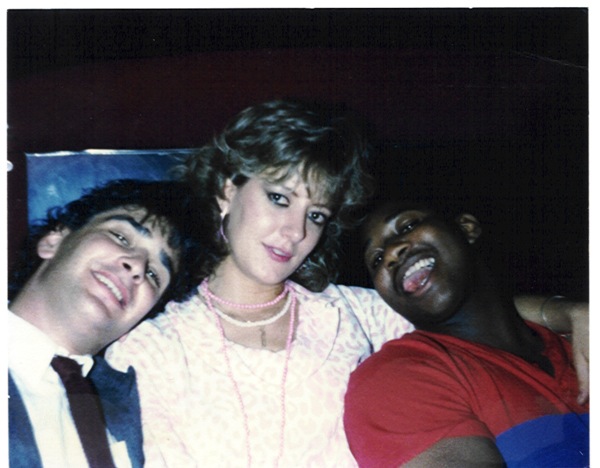
David Kurtz (left) and Tony Meredith (right) with friend Kim Race at Sparkles.
Photo courtesy of Kurtz.
Kurtz had learned more about the DJ-as-entertainer role, and was most frequently paired in the Sparkles booth with “my great partner in crime, Tony Meredith a.k.a. Tony T.”
Meredith, who’d been a regular on 1970s CityTV dance program Boogie, had been hired at Sparkles after his dance group performed one night and he particularly impressed.
“I took the mic and energized the crowd,” says Meredith who then worked for years as a Sparkles hype man, lighting person, and DJ.
“Tony and I were more than just DJs,” says Kurtz. “We entertained, rapping and dancing in sync, back before most DJs even thought to do it. The music we played had rhythm and soul. We were very heavy into artists like Earth Wind and Fire, The Whispers, Kool and the Gang, and Rick James. We played mostly commercial stuff but, every now and then, we found some strange, great dance groove and played the hell out of it.”
“We had to swing it a bit to the audience that was there, but we got to take some chances too, like running Bette Midler’s ‘The Rose’ over rap beats—that kind of thing,” Meredith tells me in a phone call from Oslo, where he and Kurtz now both live. “Sometimes, we could go a little bit off, but at the CN Tower you had to be versatile. You had to create magic.”
By all accounts, Sparkles’ crowds were a mix of suburbanites, tourists and downtowners, generally dressed with great care, ready to party and pose.
“The crowd was made up of the rich and famous as well as suburban yuppies and everything in between,” describes Kurtz. “The people who were regulars came out almost every night. They loved good music and danced to anything we threw at them. Our amps would overheat on the weekends, with the excessive heat caused by way too many people on the dancefloor and around the booth.”
Meredith recalls that some in the audience especially stood out.
“There were some regulars who’d just come in and go off,” he chuckles. “There was a model named Dorset who’d come in and dance and dance. There were a number of Korean and Filipino dancers who’d really get down. Certain people just added a whole lot while others sat and watched.”
Meredith also speaks highly of DJ Julie Ley, with whom he was partnered in the booth in the early ’80s.
“We had something special going on,” says Meredith of the DJ, who got her start at Sparkles. “Julie has such a beautiful personality and that great, raspy voice on the microphone. I called her ‘Tina Turner on the wheels of steel.’ We had so much fun, and would just blow that place out.”
Ley had been spotted working the door in a club by a Juliana’s Sound Services rep, who dug her voice, presence, and clear love of music. (Juliana’s bought Bacchus in 1982, and the two international companies provided club services under both names.)
“A few lessons, and they threw me into the lion’s den,” is how Ley describes it. “There I was, at the highest nightclub in the world! I had to find my own rhythm, not only in music but also in personality. I talked a lot on the mic, with a tambourine in hand, just getting down with the sound. We had three turntables, which made it interesting to play. There was lots of scratching, and double playing on the same song.”
One of only a handful of women spinning in Toronto at time, Ley went on to DJ for 20 years, becoming a lesbian icon as she injected huge energy and hits into mainstay clubs including Togethers, Chez Moi, and The Rose.
Who else played/worked there: Numerous DJs added their playlists and personalities to Sparkles over the years, including yet another Brit, DJ Tony TG. In the early-to-mid-1980s, Sundays featured the sounds of swing and big bands, with host Paul Fisher of CHFI. Mondays were devoted to oldies, with CFTR personalities Mike Cooper and Dan Williamson alternating from week-to-week.
There were occasional concerts, ranging from the jazz of Jim Galloway and The Metro Stompers to the new wave of Michaele Jordana of The Poles, a local band who had an underground hit in the form of 1977 single “CN Tower.”
Sparkles also hosted loads of fashion shows, including one featuring the designs of Gloria Vanderbilt in 1980. But lesser-known is the fact that the disco was taken over by some cool overnight events that same year.
“These parties would go all night, from midnight on, in Sparkles and the entire indoor observation level,” explains Charlton. “They would go until daybreak; the party would end, and it would turn back into the observation level.”
On Victoria Day weekend, a group of promoters and friends associated with the clubs Stages and Dudes presented a spectacularly gay affair with Sunrise High, featuring star DJ Greg Howlett. More than 1,000 people attended.
Later in 1980, punks and new wavers got their all-night play time in the Tower at parties with names like Spaced Out and Paradise Lost. Not surprisingly, Sparkles was also a bit of a celebrity magnet.
“There was no place anywhere else where there was a dance club 1,100 feet in the air, overlooking a major city,” says Charlton. “Sparkles drew its fair share of celebrities. Andy Gibb appeared in a Mirvish musical at The Royal Alex, so he was frequently up there. I remember Peter Fonda being up for an event, and Peter O’Toole, too, when he was in town shooting a TV version of Pygmalion with Margot Kidder.
Meredith, being both personable and a great cook, became friends with people he met at Sparkles—including Gibb, Tina Turner, her piano player Kenny Moore, and members of The Harlem Globetrotters—and would host stars and Sparkles’ staff alike at his Dundas and Sherbourne condo. (Today, he’s a popular chef in Oslo and owner of cross-cultural restaurant The Backyard.)
There was, of course, also dozens of managers, bartenders, waitresses, and other staff that made Sparkles run over the years. Many mention managers including Ahmad Ali, Pepi (Margaret) Perenyi, and Guy LeBlanc. Gareth Brown, who would later make his mark as a rock promoter and manager of clubs including Rock & Roll Heaven, was among Sparkles’ security staff. Charlton, who later became main manager at The Diamond Club, brought there with him Sparkles’ bar staff, including Pat Violo (co-owner of Catch 22 and now Velvet Underground) and Caroline Toth.
Another early Sparkles bartender was Victor Miller, founder of the long running Bartending School of Ontario and a familiar face for those who went to Toronto live music venues Piccadilly Tube and Blue Note. Miller still remembers logistical frustrations at Sparkles, including a constant lack of clean drink glasses and the club’s early adoption of an automated drink-dispensing system.
“The bar was computerized, and this was unique, but a real pain in the ass,” writes Miller in an email. “It did not allow us to make all the cocktails that were asked for due to poor programming by the management. It also did not allow us to monitor shots, so many would become quite drunk in a short time.
“Maybe the altitude had something to do with this fact. Many people dressed to the nines were sick in the elevator and lobby while leaving for home.”
The Tower’s elevators figure into many a story.
“I had one golden rule: before I got in the elevator to either go up or down, I went to the bathroom and peed first,” laughs Charlton. “In my five years, never once did I get stuck in an elevator, and I think I’m the only employee that didn’t.
“Also, I must say that I never got tired of looking out the windows. The view was absolutely outstanding. We were on the side of the Tower from which you could see the TD Centre and Bank of Montreal buildings, and Union Station. You could see the trace of the lake, all the way to Niagara Falls and the lights from Rochester on a clear night. Amazing.”
Similarly, David Kurtz—now a marketing manager for Norwegian publications Reis and Travel News—remains friends with many DJs he met at Sparkles, including fellow Toronto native Tony Meredith, the godfather of his children.
Sparkles got a sound and lighting overhaul in 1985, when management ended their contract with Bacchus/Juliana’s. Still, it remained busy right into the late-’80s.
DJ/producer Paul Grace, who played there for about three years following the club’s transition away from Bacchus’ DJs, shares some insights into the period.
“You’d think a place like that wouldn’t do so well, in terms of getting a solid local crowd, but they did,” he says. “I loved the space, and enjoyed working there, but I didn’t like the management. Things started to get really corporate. They’d even close the dancefloor down for certain corporate parties. You just don’t do that.”
While I was unable to locate anyone who could be specific about decisions leading to Sparkles’ closure, Toronto Star listings reveal that the venue was promoted as more of a dining room and lounge by early 1991. It closed later that year for renovations.
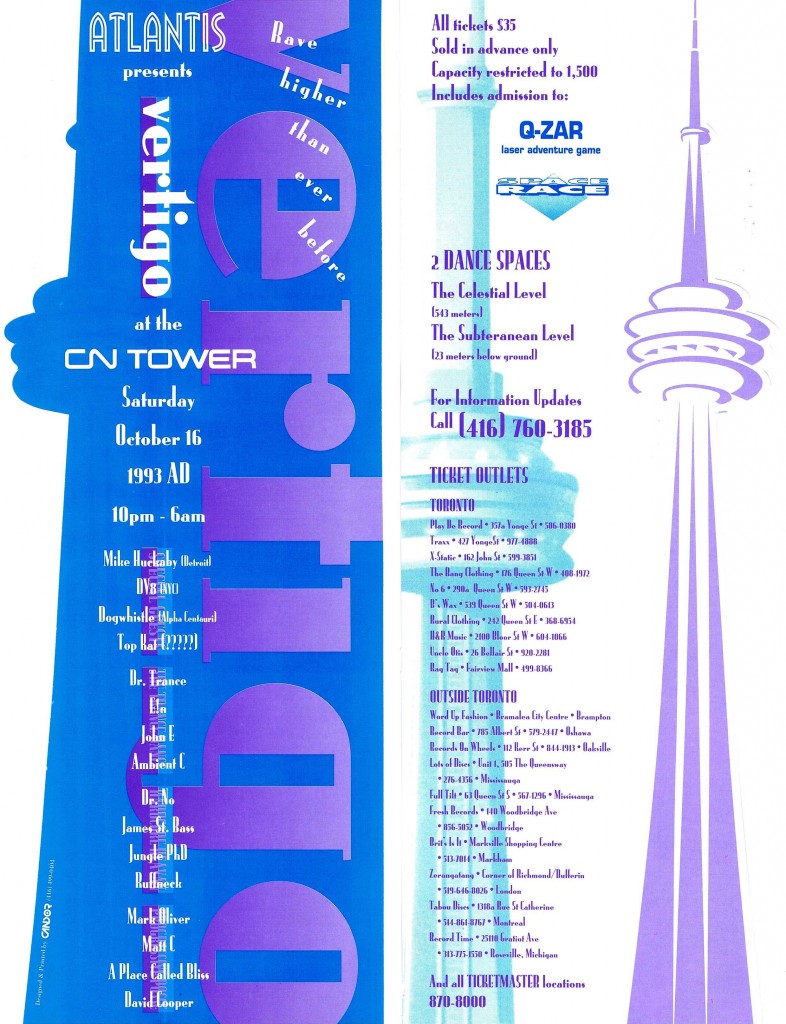
Flyer for the Vertigo rave designed by Terence ‘Teeloo’ Leung (original was die-cut and folded). Courtesy of Claudio Santon.
In May 1992, the space relaunched as pop, jazz and R&B lounge, Horizons. Live acts like The Hi-Lites performed weekends while DJ George Andrew played similar sounds throughout the week. Occasional special events still took place in the venue, including the legendary Vertigo rave produced by Atlantis (Don ‘Dr. Trance’ Berns, Iain McPherson, Claudio Santon, and James K) in October of 1993.
Today, the space is known as upscale bistro and private event venue Horizons Restaurant.
Thank you to participants Alan Gibson, David Kurtz, Julie Ley, Paul Grace, Randy Charlton, Tony Meredith, Victor Miller, and Vince Degiorgio. Thanks also to Barry Harris, Claudio Santon, Ed Conroy of Retrontario, Irene Knight (PR for CN Tower), Isabel Moniz, Linda Keele, Lorne Goldblum, Michael Sweenie, Timothy Hopton of Bacchus, and the Vintage Toronto community.

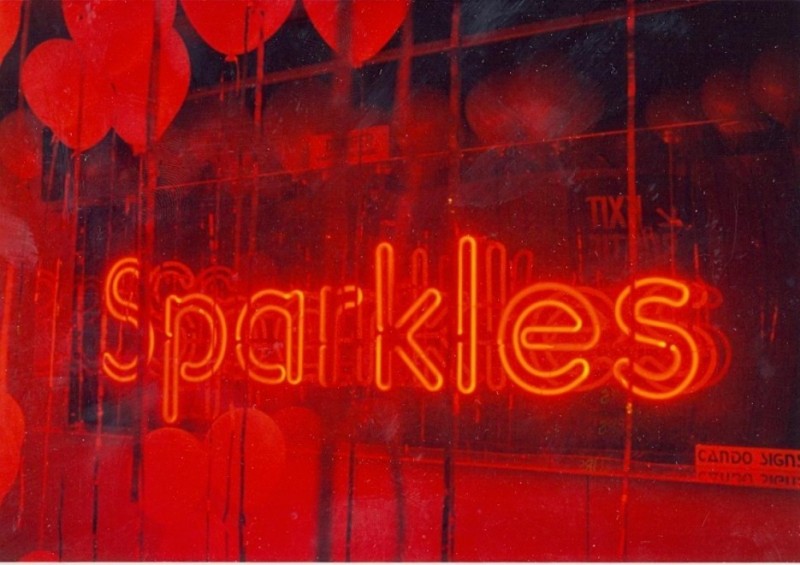
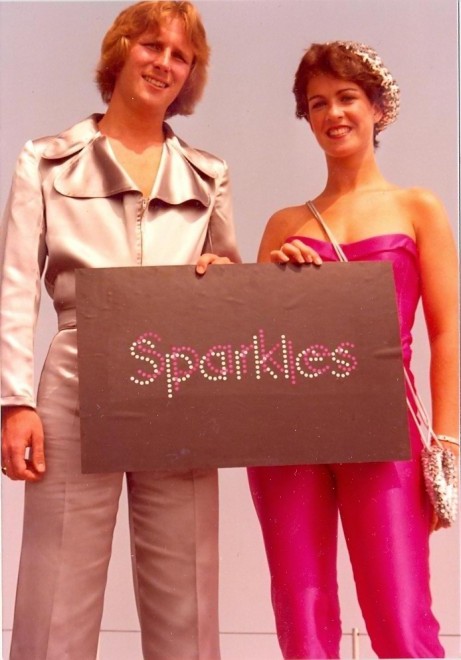
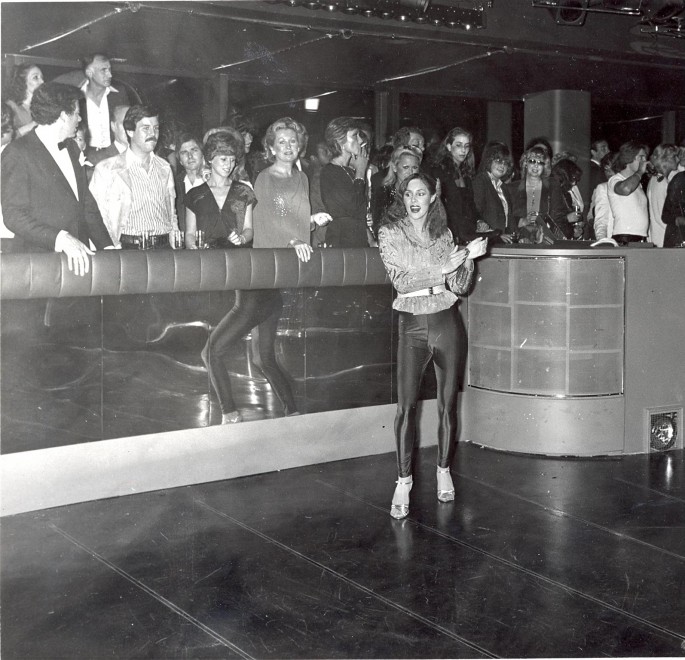
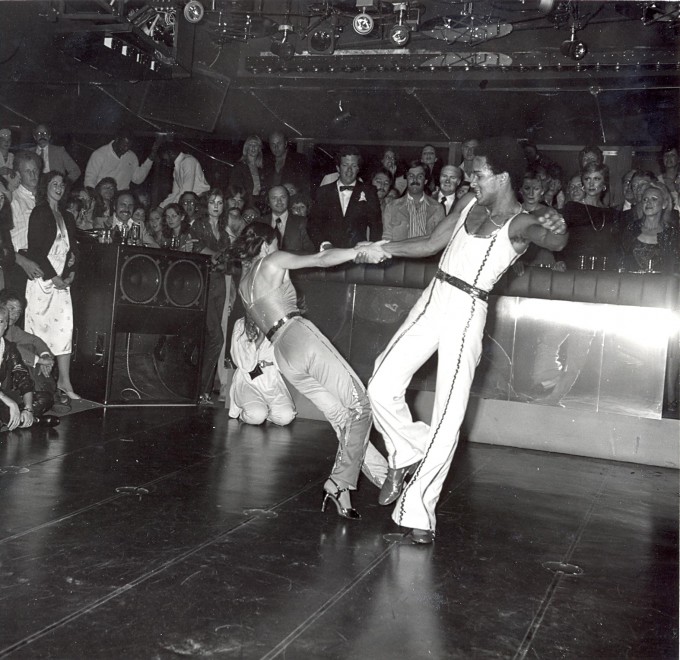
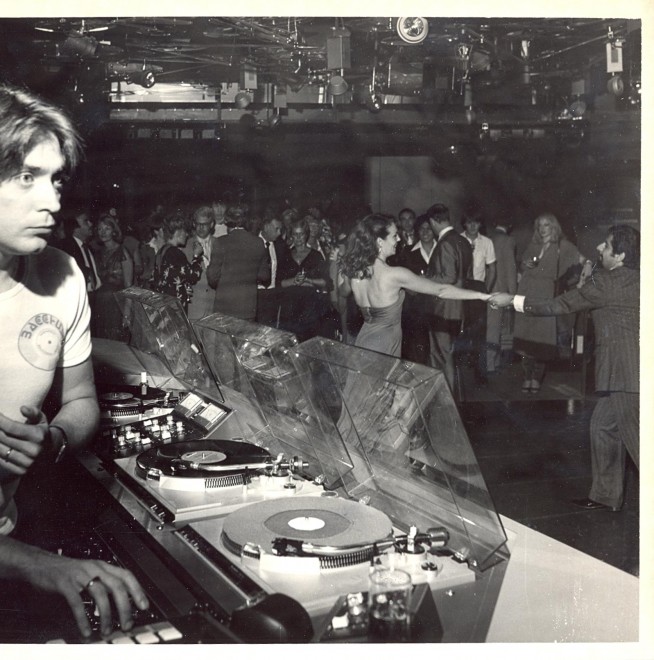
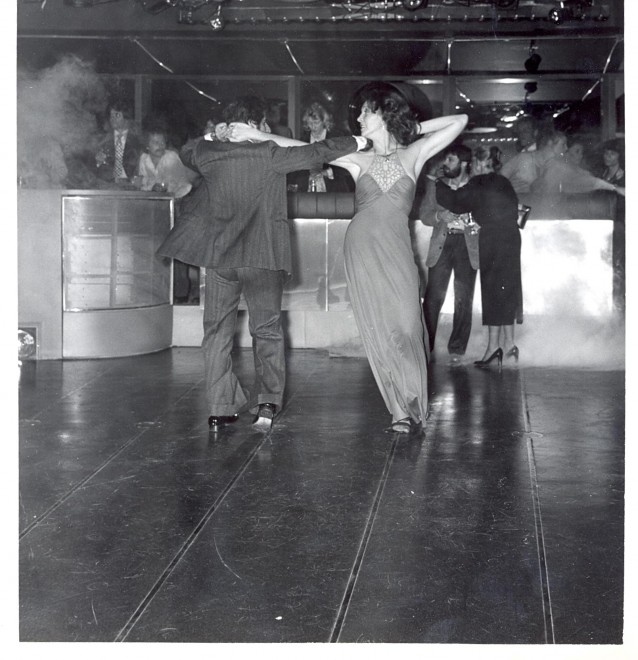
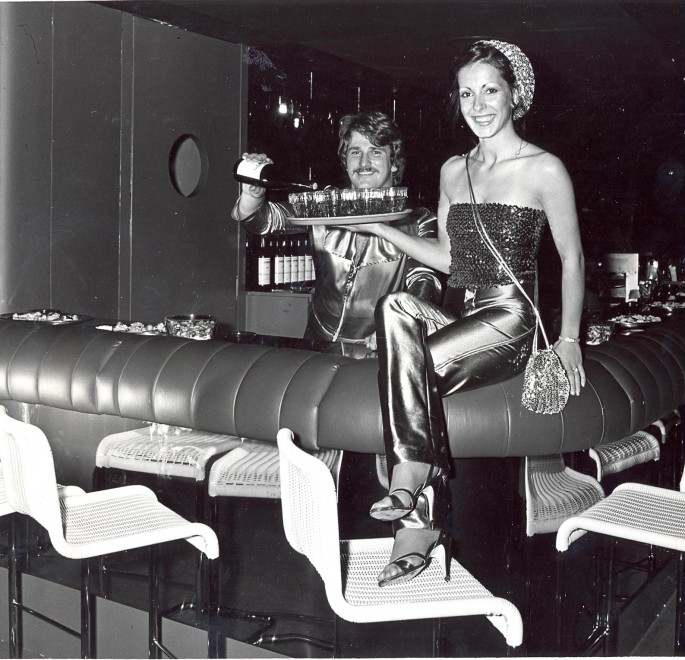
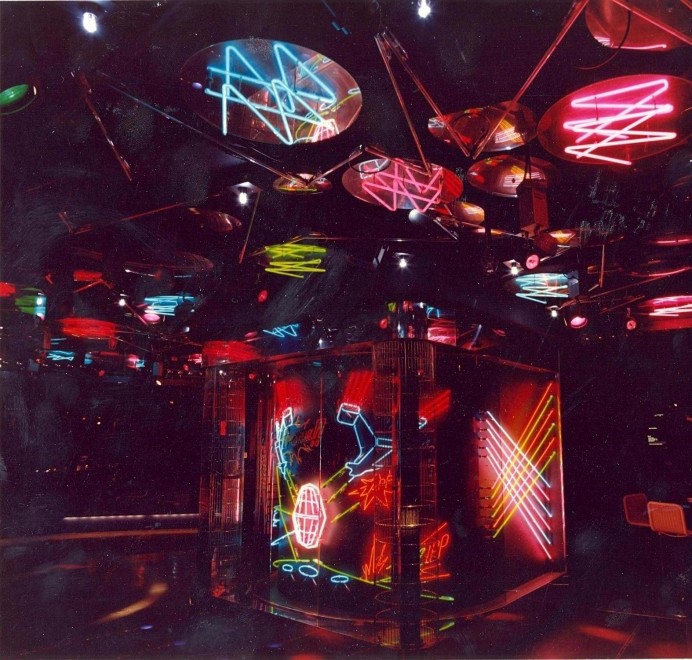
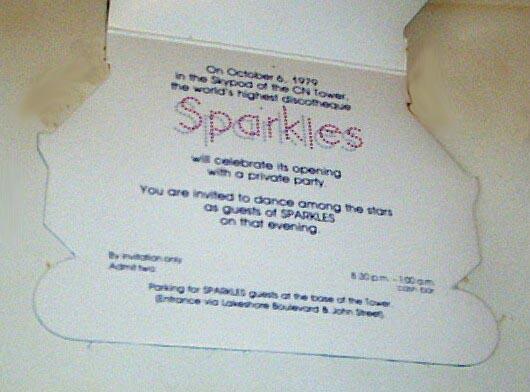
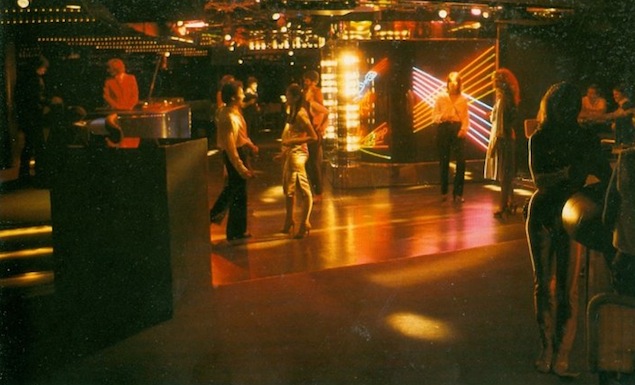
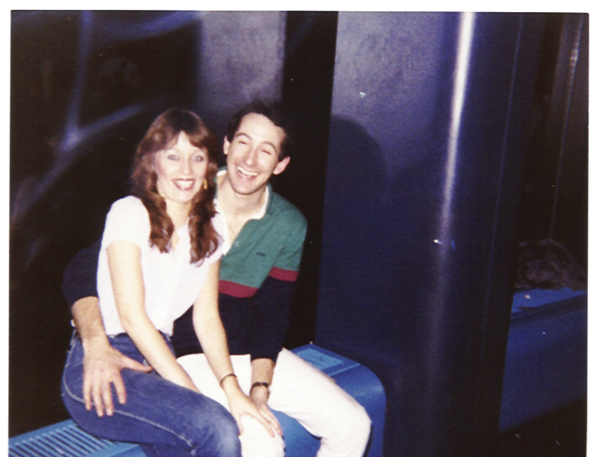
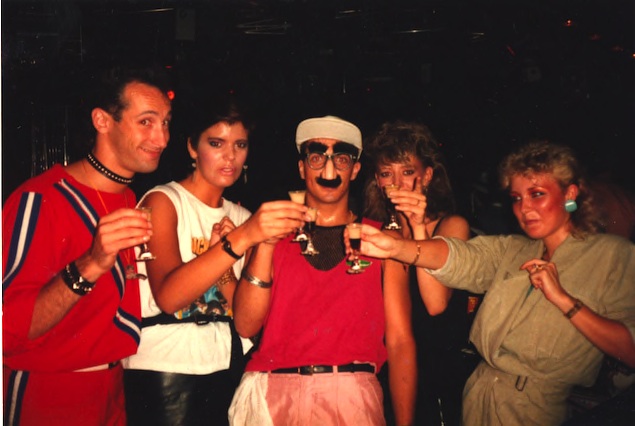
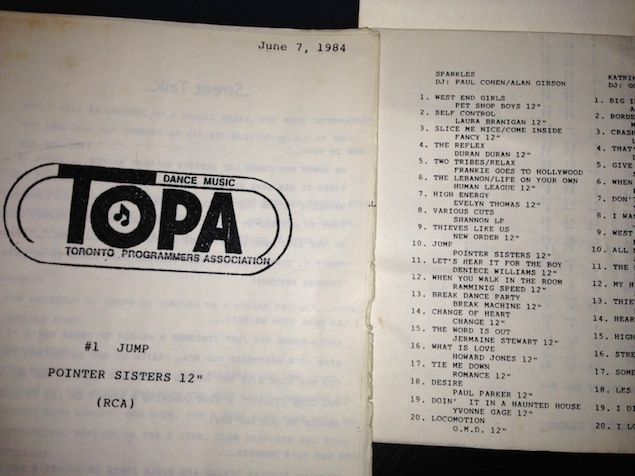
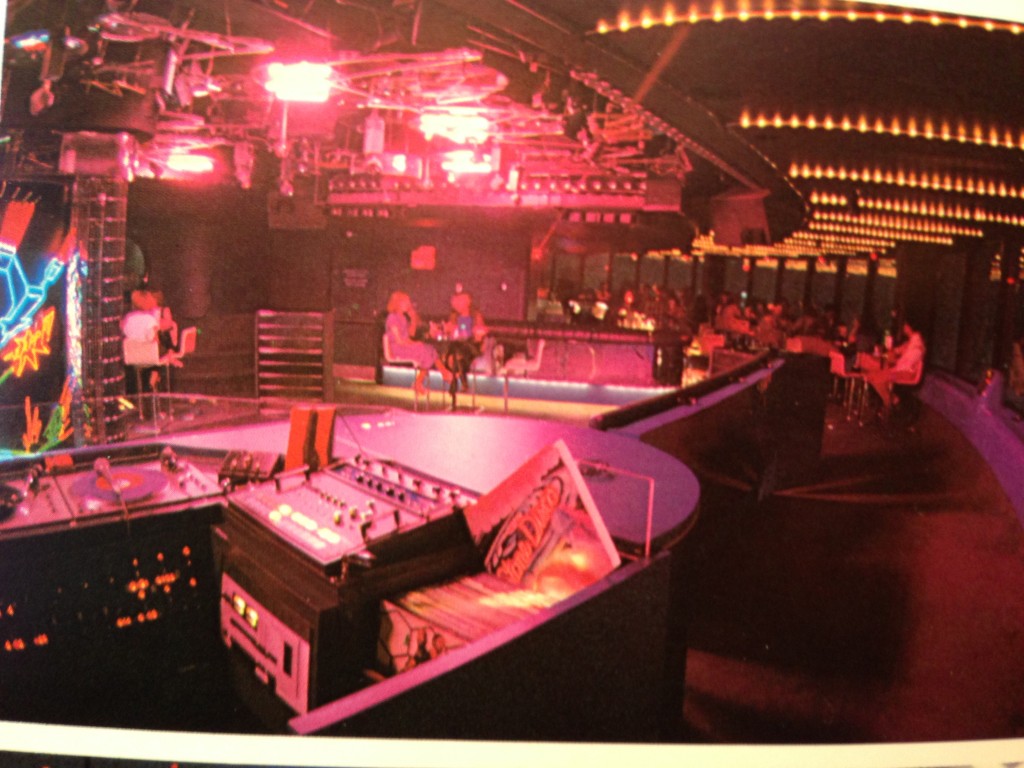
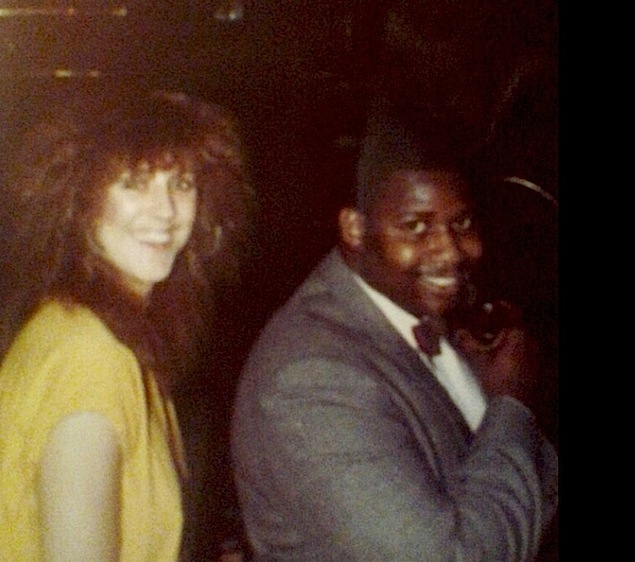
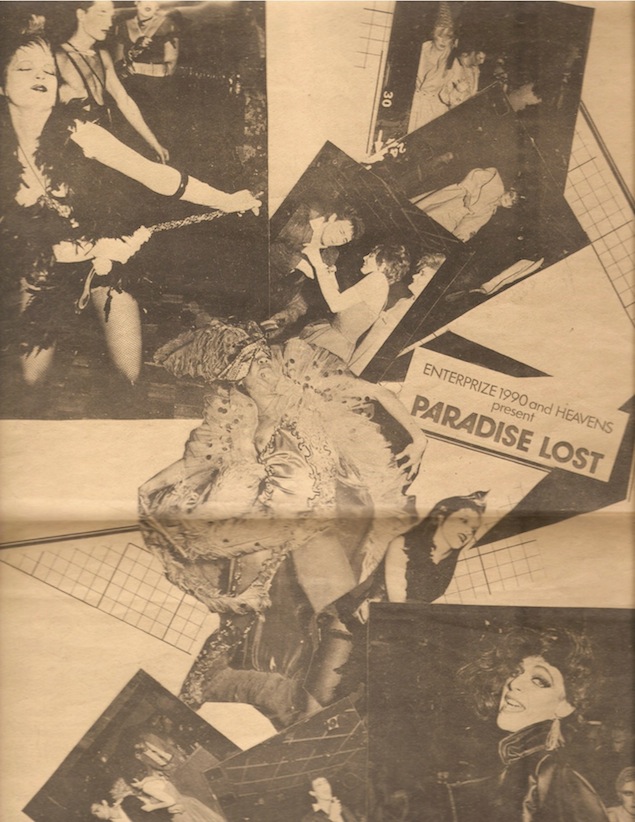
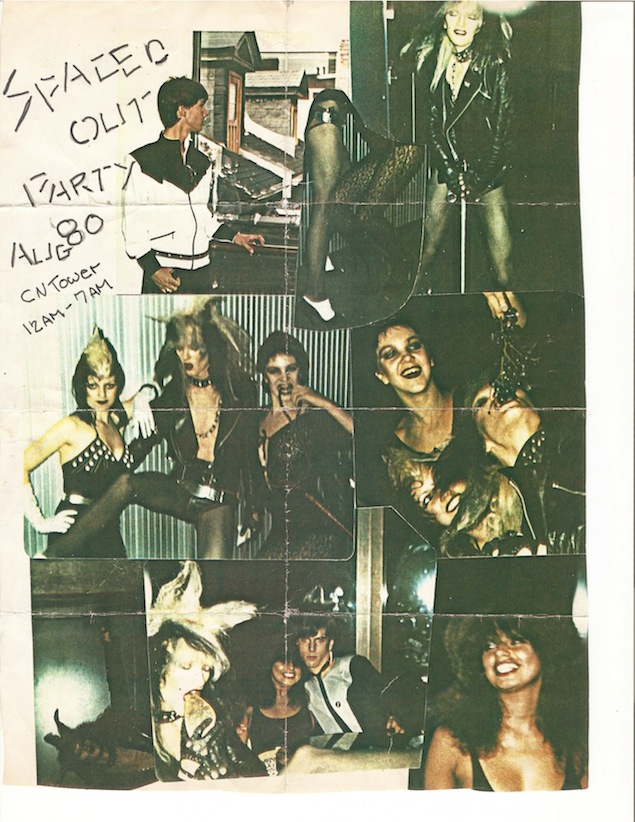
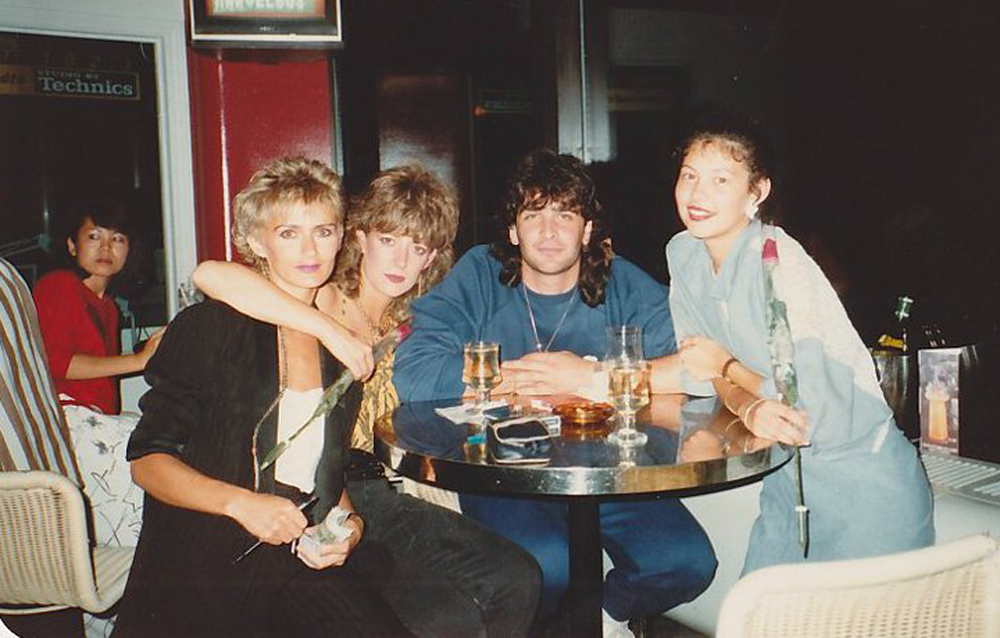
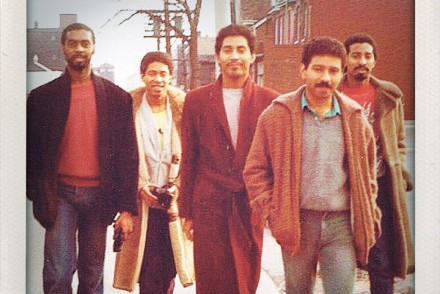
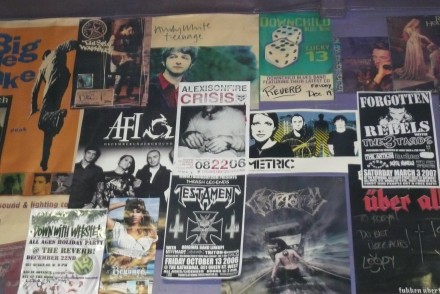
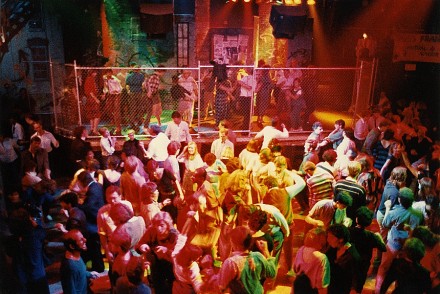

13 Comments
I went to school in late 80’s early 90’s with Steve Bolton aka Z. He had a regular set to DJ up at Sparkles one weeknight each week. Good times in an iconic club up in the sky.
I worked there as a nighttime bartender assistant in 91 I think. Marwan was a manager. No DJ, the music was a CD and the same top 40 type tracks every single night. I grew to hate some of those songs lol…….a la la la la labamba:)
[…] Benson has written the authoritative historical past of Sparkles as a part of her Then & Now collection on Toronto’s evolving nightlife scene. To get a […]
[…] Benson has written the authoritative history of Sparkles as part of her Then & Now series on Toronto's evolving nightlife scene. To get a deeper […]
[…] […]
Excellent pieces.
Great post.
I can’t believe I stumbled on this site. What fun it was to reminisce along side the storyline! That’s me and Paul Cohen back in the day (In the picture I mean). Those were the days my friends… in fact, we thought they’d never end. Talk about strolling down memory lane.
P.S Small correction however, Pepi Berenyi was a manager, no middle name Margaret. But Margaret Green was also one of the managers. The english guy was actually Irish and his name was Fred.
Hi Suzanne, I also worked there and remember you. I was the coat check girl, then went to top cash and then got promoted to head cash downstairs. What a great time we had.
Hi Susi. I definitely remember you as well. Thing I remember most about you was how young looking you always looked. Didn’t we all in hind sight? lol Fabulous days to be sure! Add me on facebook if you’re on there. Lovely to chat with you again.
In addition Cornelius was where I first met DJ Paul Grace and Christine who would get he crowd partying. It was the best of times and we thought the party would never end so many good memories.
Most notably absent from these then and now articles are bars such as Jo Jo’s, Studio, and one bar, and Leona let the most fun I had at working called Cornelius. Cornelia Sunday tea dances were legendary with line ups that could go right around the Yonge Street block and down Dundonald St, in front of the Gasworks. The Gasworks I remember was notorious for fights and brawls contrary to the happy party atmosphere upstairs.
When Cornelius first opened the owner had staff from downstairs work the bar upstairs. The “What do u want faggot” attitude from staff made the club
Unbearable and subsequently the owner realized his customers besides wanting a drink and place to dance demanded respect. He relented and hired gay staff and that’s where I first entered working in gay bars in Toronto. I met many friends there including my many soon to be co-workers when Cornelius closed and I got hired at Chaps up the street.
All comments in the string below have been republished from their original appearance on The Grid website. We’re including the readers’ comments as they add to these Then & Now stories. We look forward to reading new comments here as well.
Hope
Sparkles was a great place to go dancing and have some clean fun back in the day…good times, great memories. 4:47 am on September 24, 2014
Disco Dave
Such a nice article to stumble upon. A little more Respect on finding DJ Greg Howlett’s (R.I.P. Dec. 19/1992) Sunrise High mix. I met Greg at Le Tube (St. Nicholas St.) in ’77 and we became close DJ friends. Paul Cohen and I met in his early days as as èHouseè DJwell. He was Sparkle’s ‘House’ DJ, Paul introduced me to Bacchus Int’l Group and I contracted out for them in MTL. Mike was his lighting and MC partner. I stood in for Paul as a guest dj a few times due to being a B.I.G. dj. Sparkles mgr’s (3) were Bobby, Mike and ?(an English guy) at this time. There was a young security guard at the CN Tower named Gareth Brown. He became one of TO’s biggest rock band suppliers at RocknRoll Heavens, RPM and Charles Kabouths (Ink’s), Warehouse (Guvernment’s). One day, while spinning as ‘House’ dj at Jupiter’s (Dorval Hilton) Bobby called me and asked if I wanted to be House dj for Heaven’s (fomerly Mingles), so I took the contract and came home. Thanks for reminiscing!! Check out some great Toronto, DJ historys’ @ Discomusic.com 10:00 pm on April 26, 2014
Jim
I used to live in CLE but now reside in PHX and we would come to Toronto often. Every trip back, we always came to Sparkles disco. What fond memories we have. The music was great and loved when the fog machines would come on. We also would frequent NYC and head to Studio 54…. Two great hangouts… 5:54 pm on April 3, 2014
Pukka Orchestra
Thank you for playing our music down through the years. We greatly appreciate it and recognize that DJ’s are artists themselves and our songs are their medium. Keep ‘em dancing! Tony and the rest of the Pukka’s 9:12 pm on March 9, 2014
Preciosa
Thanks for the article – fond memories of Sparkles! 6:48 pm on August 28, 2013
Gowiththeflo
Sparkles was an awesome night club trip back in the day. 10:07 pm on August 27, 2013
Tara
Amazing article and fantastic photos! What a fun time in Toronto’s history! I was way too young, but I wish I could have danced the night away there! 12:40 pm on January 18, 2013
Laura
Fantastic article. Thanks for this. 12:42 pm on January 7, 2013
Cool
Wow – I”m not even THAT young and I had NO idea there used to be a disco up in the CN Tower. This piece was awesome! Thank you Denise Benson! p.s. Why the fuck isn’t Toronto cool anymore? Wah. 12:15 pm on January 7, 2013
stu
It’s not Toronto that’s not coll anymore. Toronto never stopped being cool. 8:25 am on August 27, 2013
Alan Gibsom
Memories!!! Great stuff . . .I LOVED Toronto, I loved working at Sparkles …. thanks for the memories!! 8:23 pm on December 21, 2012
Guy
It was a great place to work in the 80s.. 5:29 pm on December 21, 2013